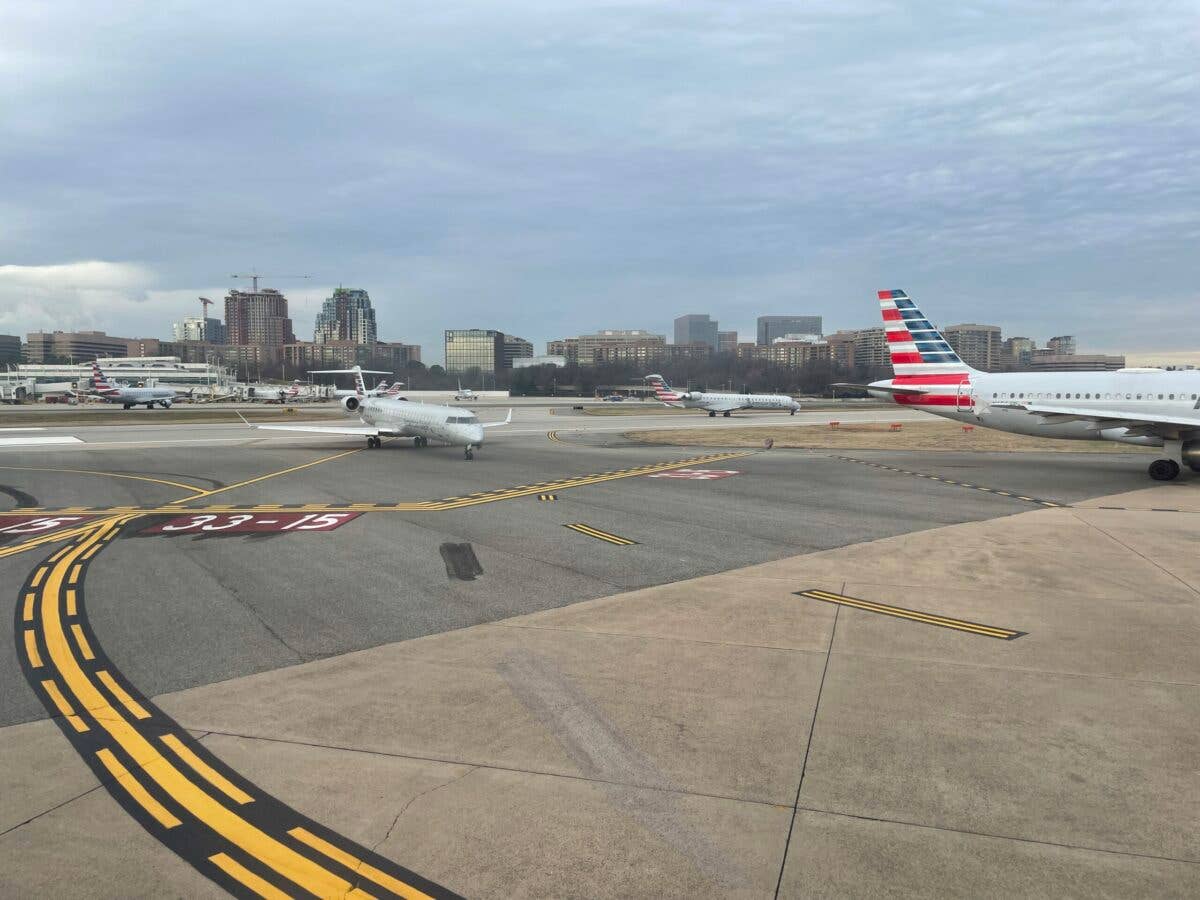FAA Launches Investigation of Runway Event at Washington National Airport
During the runway incursion, an airliner crossed an active runway at KDCA without a clearance.

Holding for departure on Runway 19 at KDCA, with departures on Runway 15 in view. [Credit: Julie Boatman]
The FAA is investigating a runway incursion at Ronald Reagan Washington National Airport (KDCA) on the morning of March 7.
The event marks the seventh runway near miss at a U.S. airport this year.
“Republic Airways Flight 4736 crossed Runway 1 without clearance, putting the aircraft in the path of United Airlines Flight 2003, which had just been cleared for takeoff, the agency told FLYING in a statement.
The Republic flight was conducted on an Embraer E175. The United flight was operating an Airbus A319.
An air traffic controller noticed the situation and immediately canceled the takeoff clearance for the United flight, according to the FAA. The pilot of the Airbus complied.
"The pilot of the Republic flight had originally been cleared to cross Runway 4 but turned on the wrong taxiway," the FAA said.
The FAA will determine the closest proximity between the two aircraft as part of the investigation.
A spokesperson for the National Transportation Safety Board told FLYING that the agency is "monitoring the situation," but as of Wednesday morning had not launched an investigation.
Runway, Taxiway Confusion
A review of the airport diagram for KDCA shows several intersecting runways and “hot spots,” the FAA's term for places on the airport surface where the potential for a runway incursion is high. Often this is because of complicated or confusing taxiway layouts and runway intersections.
Last spring the FAA made an effort to standardize hot spot symbols on airport diagrams by employing the use of three shapes with two distinct meanings: a circle or ellipse for ground movement hot spots and a cylinder for wrong surface hot spots.
The FAA adds these hot spot indicators on diagrams to call a pilot's attention to the potential for:
- hold short line infractions
- approach hold issues
- complex taxiway configurations
- movement-nonmovement boundary area issues
- tower line of sight problems
- marking and signage issues.
The cylinder for wrong surface hot spots depicts locations where an aircraft has inadvertently attempted to take off or has landed on the wrong surface.

Subscribe to Our Newsletter
Get the latest FLYING stories delivered directly to your inbox






